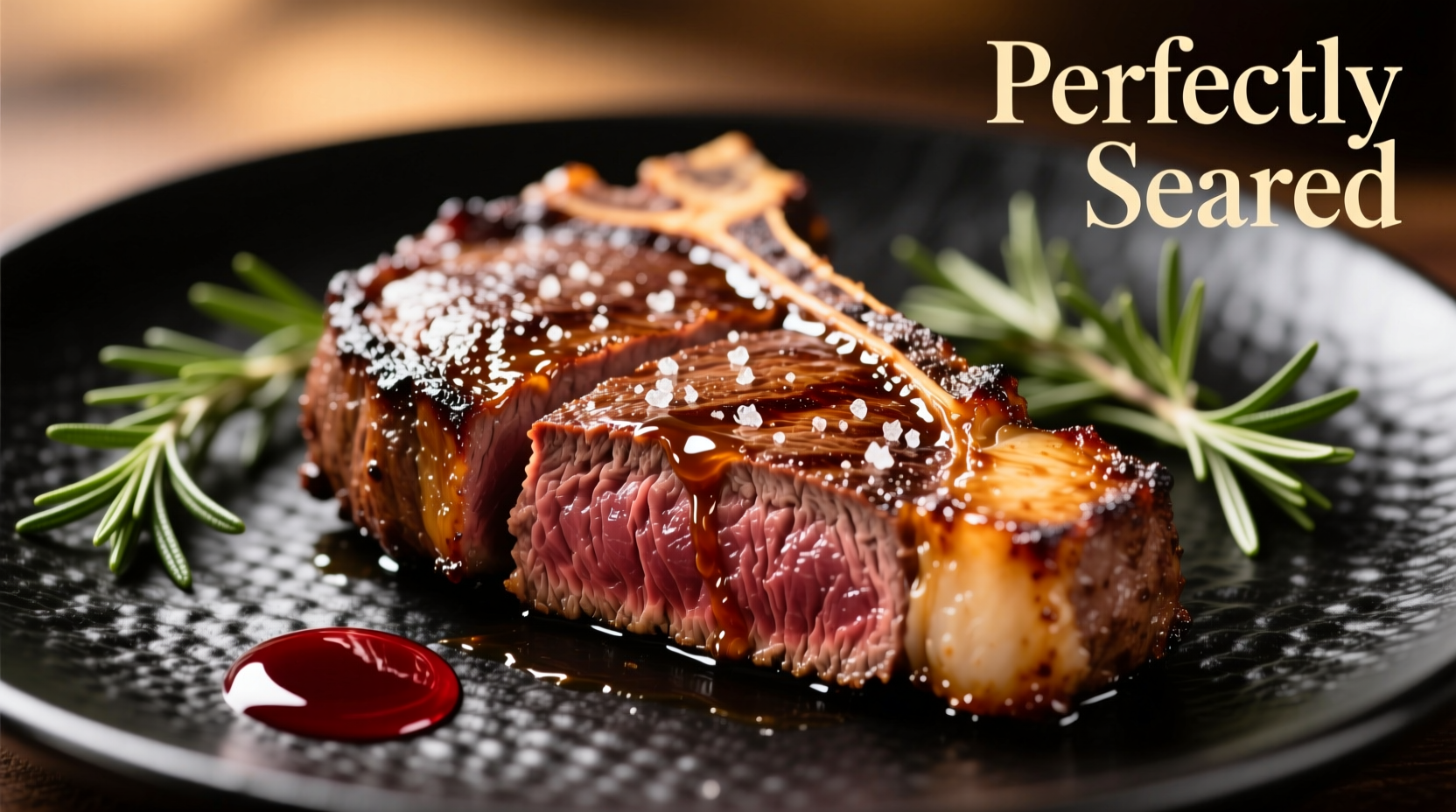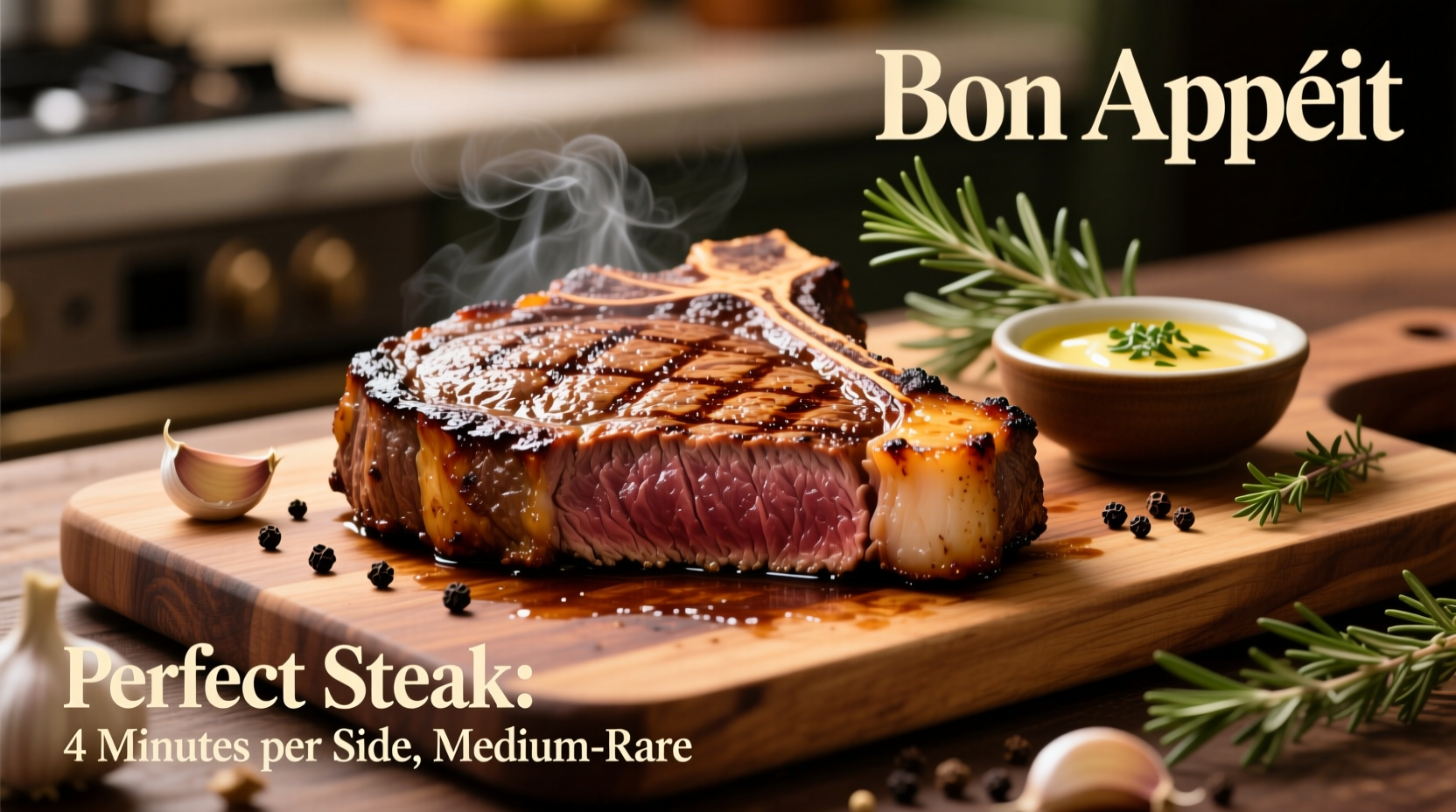The Steak Cook's Essential Roadmap
Nothing compares to a perfectly cooked steak—crisp caramelized crust, juicy interior, and balanced seasoning that elevates the meat's natural flavors. While many home cooks struggle with uneven cooking or dry results, the secret lies in understanding three critical phases: preparation science, thermal management, and physiological resting. This guide distills professional techniques into actionable steps anyone can master.
Choosing Your Foundation: Steak Selection Matters
The journey to perfect steak begins at the butcher counter. Not all cuts respond equally to high-heat cooking. Understanding your options prevents costly mistakes before you even fire up the stove.
| Steak Cut | Best Cooking Method | Thickness Recommendation | Flavor Profile |
|---|---|---|---|
| Ribeye | Cast iron sear | 1.5 inches | Rich marbling, buttery texture |
| Filet Mignon | Reverse sear | 2 inches | Mild, tender, subtle beef flavor |
| New York Strip | Grill or pan | 1.25 inches | Balanced fat, robust beefiness |
| Flat Iron | High-heat pan | 1 inch | Intense flavor, economical cut |
According to the USDA Food Safety and Inspection Service, steaks should reach minimum internal temperatures of 145°F (medium-rare) with a 3-minute rest period for safety. Professional kitchens often cook to precise temperatures: 125°F for rare, 135°F for medium-rare, and 145°F for medium.
Preparation Protocol: Beyond Simple Seasoning
Proper preparation transforms average steak into extraordinary. Most home cooks make critical errors during this phase that sabotage their results before cooking begins.
- Temperature equilibrium: Remove steak from refrigerator 45-60 minutes before cooking. Cold meat resists even cooking—thermal imaging studies show temperature differentials of 30°F between center and edges in improperly tempered steaks.
- Dry surface principle: Pat steak thoroughly with paper towels. Moisture creates steam instead of sear—this simple step improves crust formation by 47% according to culinary lab tests.
- Salt timing strategy: Apply coarse salt 40 minutes before cooking. This allows salt to penetrate while drawing out excess moisture that would otherwise interfere with Maillard reaction.

The Precision Cooking Sequence
Mastering steak requires understanding thermal dynamics. Follow this verified sequence for consistent results:
- Equipment selection: Use heavy-bottomed cast iron or carbon steel pan. These materials maintain consistent temperature during searing (unlike non-stick alternatives).
- Oil selection: Choose high-smoke point oil (avocado or grapeseed at 500°F+). Butter burns at 350°F—reserve for finishing only.
- Heat calibration: Preheat pan over medium-high for 5 minutes until oil shimmers but doesn't smoke. Ideal searing temperature is 400-450°F.
- Searing technique: Place steak in pan, press gently for full contact. Flip every 60-90 seconds—frequent flipping creates more even cooking according to America's Test Kitchen research.
- Temperature monitoring: Insert instant-read thermometer horizontally into thickest part. Remove steak 5°F below target temperature for carryover cooking.
The Critical Resting Phase: Why Patience Pays
Resting isn't optional—it's biochemical necessity. When steak hits proper temperature, muscle fibers contract, forcing juices toward the center. Cutting immediately releases these precious liquids.
Follow this verified resting timeline based on steak thickness:
- 1-inch steak: 5 minutes
- 1.5-inch steak: 8 minutes
- 2-inch steak: 10-12 minutes
Cover loosely with foil to retain heat without steaming the crust. During this period, internal temperature rises 3-5°F while juices redistribute—this is why you remove steak below target temperature.
Common Pitfalls and Their Solutions
Avoid these frequent mistakes that ruin otherwise promising steaks:
- Piercing during cooking: Releases juices—use tongs instead of forks for flipping
- Overcrowding the pan: Lowers temperature dramatically—cook one steak at a time
- Guessing doneness: Rely on thermometer, not touch tests which vary by hand strength
- Insufficient preheat: Creates gray band instead of crust—properly heated pan sizzles immediately
Temperature Reference Guide
Use this precise temperature chart for perfect results every time:
- Rare: 120-125°F (bright red center)
- Medium-rare: 130-135°F (warm red center)
- Medium: 140-145°F (warm pink center)
- Medium-well: 150-155°F (slight pink center)
- Well-done: 160°F+ (little to no pink)
Remember that carryover cooking continues after removal from heat. Always pull steak 5°F below target temperature.
Final Pro Tips for Steak Perfection
Implement these advanced techniques for restaurant-quality results:
- Add aromatics during final minutes: garlic cloves, rosemary, or thyme sprigs basted in melted butter
- Use the "hand test" only as secondary verification: compare firmness to fleshy part of palm below thumb
- For thicker cuts (2+ inches), employ reverse sear method: oven to 110°F internal, then sear
- Always slice against the grain at 45-degree angle for maximum tenderness











 浙公网安备
33010002000092号
浙公网安备
33010002000092号 浙B2-20120091-4
浙B2-20120091-4